New technologies do not stand still: liquid clothing is replacing regular clothing. What the new fashion is and who invented it, we will consider later in the article.
Who invented liquid clothing?
The world's first liquid clothing was invented by the Spaniard Manuel Torres.. Over the course of ten years, the designer created his collection. However, its development did not require knowledge of design and sewing, but chemistry and physics. The creator claims that With the help of a spray can you can make your entire wardrobe yourself.
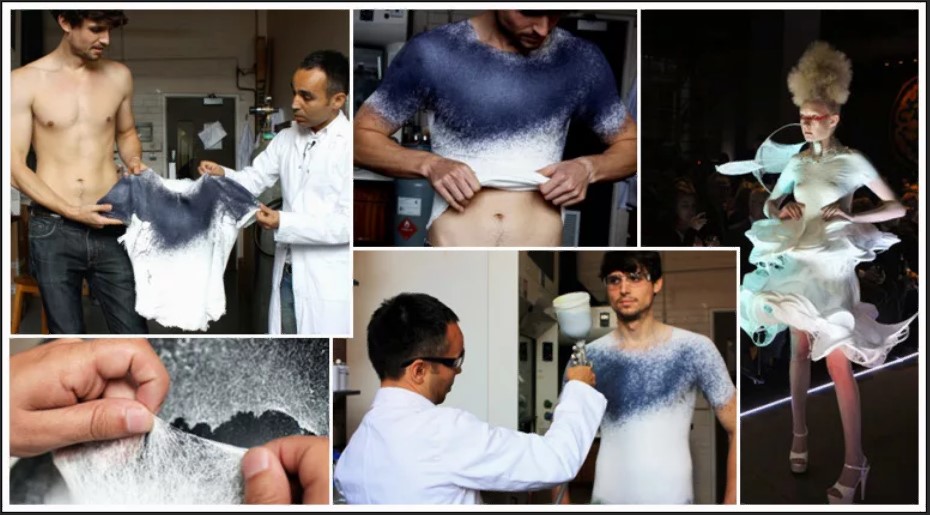
Important! “Tailoring” a liquid outfit will take no more than three minutes.
Liquid spray clothing
After application to the skin, the product instantly hardens and takes on a structure that looks like ordinary fabric. The resulting item follows the contours of the human body and is completely true to size.
Presence of micropores allows you to use it for sports.
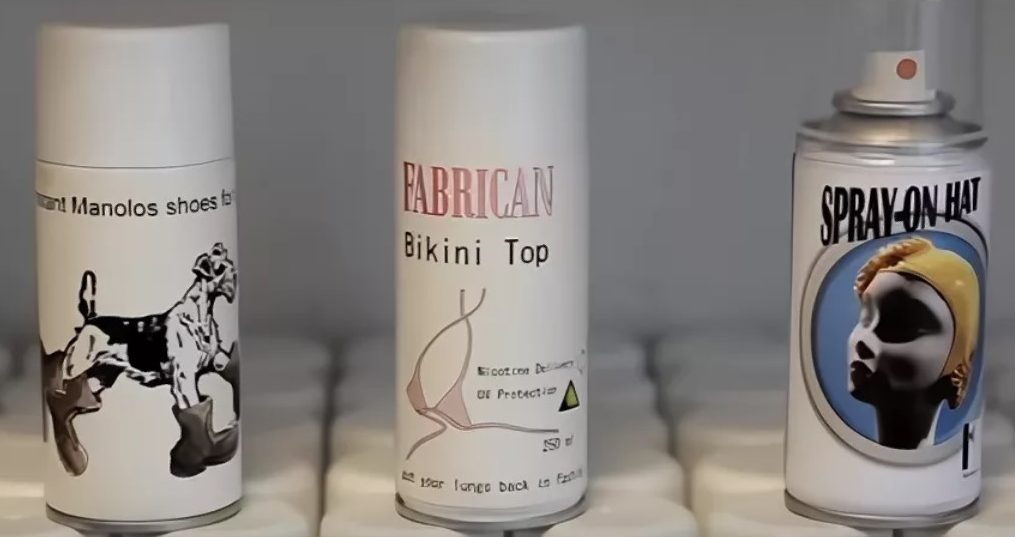
The can costs about $25. It turns out that such clothes will cost much less than branded items.
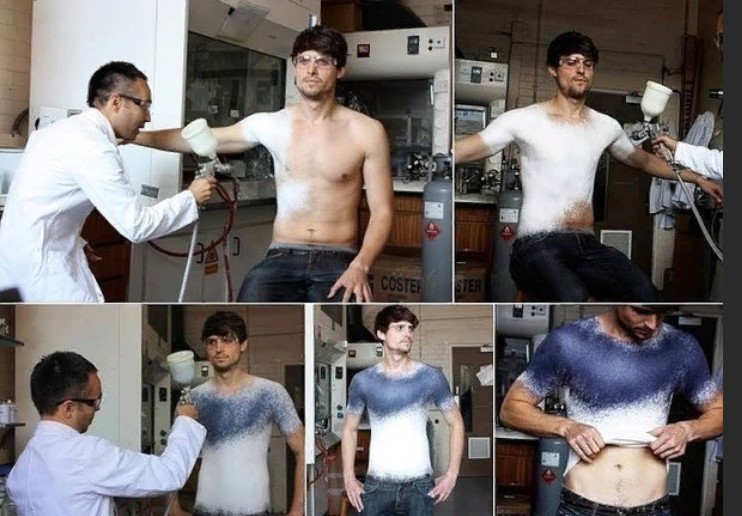
Attention! Thanks to the wide variety of colors, you can come up with an unlimited number of shades and patterns.
Synthesis of liquid materials: wool, linen, silk
Thanks to new technology, managed to combine suspension, fiber and binder concentrates. The fabric is not wet or sticky.
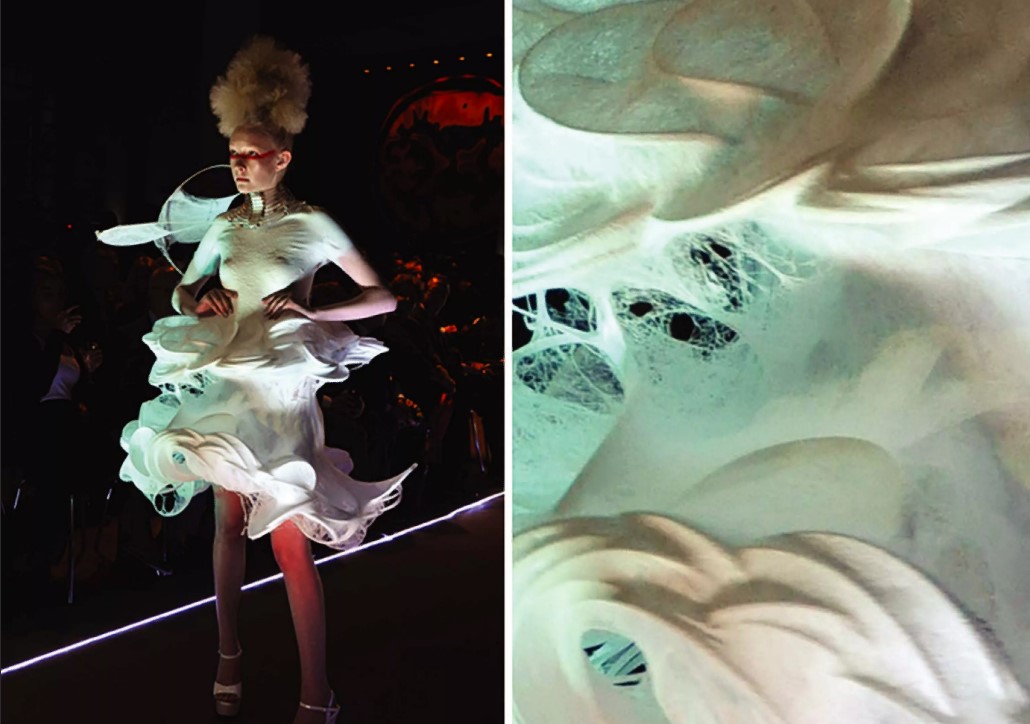
The developer has already succeeded in synthesizing wool, silk and flax. This means that clients always have there is a choice of what to wear, taking into account weather conditions, time of year and personal preferences. Girls will especially appreciate the new product. After all, tights can be replaced with a special lotion that contains bronzers. The material will hide all the unevenness and make the skin on your legs smooth and well-groomed.
How to put on and then take off liquid clothing?
Compound applied to the naked body in several layers. Those who have tried it themselves note that At first you feel a slight chill, and then a feeling of sunburn appears.
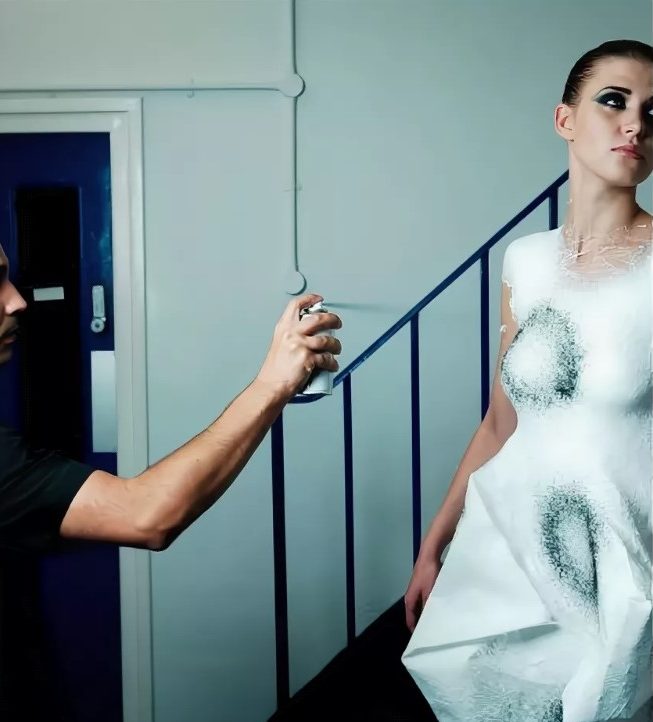
People with curvy figures are unlikely to dare to experiment like this, because the clothes turn out to be tight-fitting. But lovers of tight-fitting T-shirts, tops and leggings will be completely delighted with the product.
In most cases, buyers are interested in how to remove liquid clothing. However, there are no difficulties in this process. The fabric dries instantly and easily comes off the body. Received item of clothing designed for repeated use.

The outfit can be removed, washed and worn several times. If holes appear, the material can be easily repaired by filling it with a new layer.
Reference! The development will allow you to create 3D shoes. So, in America, it takes only 10 minutes to print sneakers. The material used is thread.
Many experts have already come to the conclusion that liquid clothing will revolutionize and radically change the fashion industry.

The invention has a great future. After all, with the help of a spray can you can create any wardrobe items, from underwear to complex designer dresses.


 0
0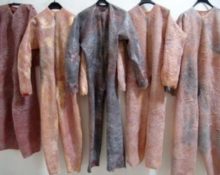

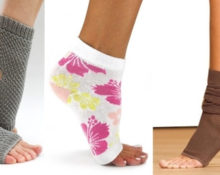
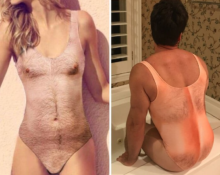

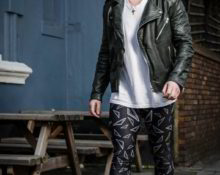

what about hairy chest? You won't be able to dress like that without removing your body hair. very troublesome, however.
How is the used product disposed of? What is the harm to nature? Mass use will not be a global catastrophe. Everyday demand - food is all wrapped up, packed in chemicals. Now and clothes!
Vlad! I immediately had a question - what about increased hairiness? On any body, even a woman’s, there are small hairs everywhere, even on the back! Or will it only hurt to take it off the first time? After the first epilation it will be easier!
Stanislav Lem, in “Return from the Stars,” predicted something similar - “But the purpose of the mysterious siphons, those in the bathroom cabinet with the inscription: “Bathrobes,” was finally revealed. Not only such a robe, but also suits, stockings, sweaters, underwear - everything was made from blown plastic.It is clear that women must have liked this - by manipulating several siphons, they could create a new outfit for themselves every time, even for a single occasion; siphons released liquid, which immediately solidified in the form of fabric with a smooth or rough texture: velvet, fur, or elastic with a metallic sheen. “
How is such a product created? Or what is it made of?